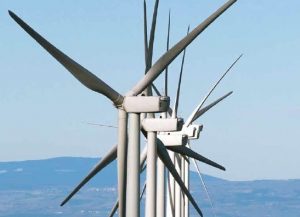Secretary of the Interior Ken Salazar praised the work of the 22-member Wind Turbine Guidelines Federal Advisory Committee, which reached consensus on a set of draft recommendations aimed at minimizing the impacts of land-based wind farms on wildlife and its habitat. Salazar said he will review the recommendations and take them under advisement as he asks the service to develop guidelines for evaluating wind energy development on public and private lands.
“Wind power is one of the keys to America’s clean energy future, but its development must be balanced with the long-term protection of the natural resources under our management,” Salazar says. “I commend the committee for their two years of work developing these recommendations, which will help us ensure that wind energy is developed in a responsible manner.”
Highlights of the committee’s recommendations include a decision-making framework that guides all stages of wind energy development; reliance on the best available science when assessing renewable energy projects and their potential environmental impact; and use of landscape-scaled planning that recognizes the need to think long-term about protecting our nation’s economic and natural resources.
“The Interior Department is creating a new energy frontier for America by harnessing the renewable-energy potential of America’s public lands while protecting wildlife,” says Michael Bean, counselor to assistant secretary for Fish and Wildlife and Parks. “The committee’s recommendations will help us reach science-based decisions for future wind energy projects, while minimizing and mitigating local and regional impacts to wildlife.”
The group was created in accordance with the Federal Advisory Committee Act and represents varied interests associated with wind energy development as well as wildlife management professionals. The committee does not address offshore wind energy development. The committee reports to the secretary of the interior through the director of the U.S. Fish and Wildlife Service. It functions solely as an advisory body, providing recommendations on effective measures to protect wildlife resources and coordinate the review and evaluation of facilities by state, tribal, local, and federal agencies. The draft report contains both policy recommendations and recommended voluntary guidelines for siting and operating wind energy projects in order to avoid or minimize potential impacts to wildlife and habitat. To learn more about the Interior Department’s wind initiatives visit www.doi.gov/whatwedo/energy.

























